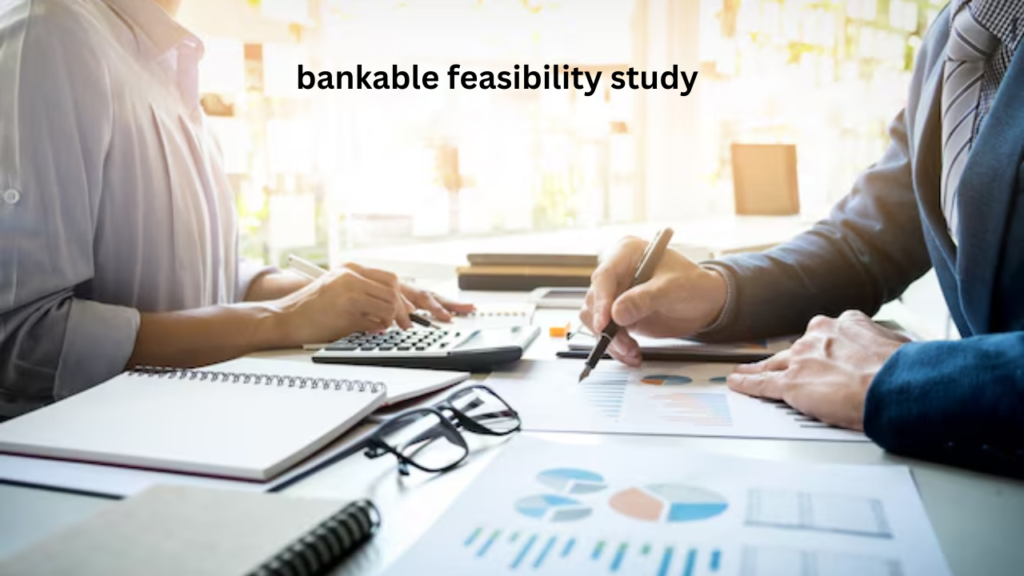When embarking on a large-scale business project—whether it’s in the mining sector, energy, or infrastructure—one of the most crucial steps is ensuring the project is financially viable. This is where a Bankable Feasibility Study (BFS) comes into play. Think of it as the backbone of any major business endeavor. The BFS evaluates whether the project is worth pursuing by analyzing everything from the technical aspects to the financial risks and rewards. In simple terms, it helps answer the key question: Will this project make money and is it worth the investment?
In this guide, we’ll break down what a Bankable Feasibility Study is, why it’s so important, and the steps involved in creating one.
What is a Bankable Feasibility Study?
A Bankable Feasibility Study is a detailed, in-depth evaluation of a project, used primarily to convince investors or banks to provide funding. Before any investor or bank writes a check, they need to be confident that the project will be successful and generate returns. The BFS does exactly that—it takes a magnifying glass to every facet of the project to see if it’s both practical and profitable.
Unlike a preliminary feasibility study, which might give a rough estimate, a BFS leaves no stone unturned. It covers the technical setup, legal considerations, economic viability, environmental impacts, and more. By the end of the study, everyone involved should have a clear picture of whether the project is worth the financial risk.
Why is a Bankable Feasibility Study Important?
You might be asking: Why do we need such a detailed study? A Bankable Feasibility Study plays a crucial role in shaping the future of a project. Here’s why it’s so essential:
- Securing Investor Confidence: Before a financial institution or investor puts up money, they need assurance that the project can make a profit. The BFS provides them with detailed information on the project’s financial projections, giving them confidence that their investment will pay off.
- Minimizing Risk: Large projects come with large risks. By identifying and addressing these risks early on, the BFS helps reduce the chance of unexpected failures down the road. For instance, it examines whether the project is technically feasible and whether it complies with environmental laws, preventing future hurdles.
- Offering a Roadmap: Beyond simply analyzing if a project will work, a Bankable Feasibility Study provides a clear plan for how it will be executed. It gives a step-by-step guide, laying out the timeline, costs, and the resources required to bring the project to life.
- Providing Validation: A thorough BFS validates the project’s viability by examining all aspects in detail. If the study shows that the project is financially sound and technically feasible, stakeholders are more likely to give the green light.
Key Components of a Bankable Feasibility Study
A Bankable Feasibility Study is made up of several key sections, each focusing on a different aspect of the project’s feasibility. Let’s dive into these critical components.
- Technical Feasibility: This section takes a close look at the technical details of the project. It covers how the project will be built or executed, including engineering designs, infrastructure requirements, and operational capabilities. For example, if you’re planning to open a mine, this section would detail the mining process, the type of equipment needed, and the physical layout.
- Economic Viability: One of the main goals of a Bankable Feasibility Study is to determine whether the project will be profitable. This part of the study evaluates costs, potential revenue, and financial projections. It includes an in-depth look at how much money will be needed to get the project up and running and how long it will take to start generating profits.
- Market Research: Understanding market demand and supply is crucial to any project’s success. This part of the BFS examines current market conditions, potential competitors, and future trends. For example, in a renewable energy project, the study might look at how much demand there is for green energy and how much market share the project can capture.
- Environmental and Social Impact: Modern projects, especially large ones, must consider their impact on the environment and local communities. The Bankable Feasibility Study will include an Environmental Impact Assessment (EIA), evaluating how the project affects air quality, water resources, and wildlife. It also looks at how the project could benefit or negatively impact local populations, such as through job creation or displacement.
- Legal and Regulatory Compliance: Every project must meet legal and regulatory standards. The BFS outlines the necessary permits, licenses, and other legal requirements, ensuring that the project complies with the law at every step. This could involve land use permits, environmental regulations, or health and safety standards.
- Financial Model: The financial model is the heart of the BFS. It forecasts cash flow, potential returns on investment (ROI), and the overall financial health of the project. It allows investors to see how much profit the project could generate and whether it’s worth backing.

Steps in Conducting a Bankable Feasibility Study
Conducting a Bankable Feasibility Study isn’t a quick process. It involves several steps, each designed to gather detailed information and analyze the project from all angles.
- Scoping the Study: Before diving into the BFS, the project’s scope needs to be defined. What is the objective of the project? What are the primary assumptions? This preliminary phase sets the stage for the study and identifies the key questions that need to be answered.
- Data Collections: next step is to collect all the necessary information. This can range from technical designs and environmental assessments to market research and financial forecasts. The quality of this data is crucial, as it forms the foundation of the entire study.
- Technical Planning: With the data in hand, the technical planning phase begins. Engineers and experts design the technical framework for the project. This involves choosing the right technologies, equipment, and operational processes to ensure the project can be executed smoothly.
- Economic and Financial Evaluation: After technical planning, the economic and financial side of the project is assessed. Analysts create detailed financial models, examining costs, revenue potential, and profitability. This step is critical, as it helps determine if the project will make money and how much funding is required.
- Risk Assessment: Every project comes with risks, and it’s essential to identify these early on. The Bankable Feasibility Study includes a risk assessment that looks at both internal and external factors, such as market volatility or regulatory changes. The study will also propose strategies for mitigating these risks.
- Final Report: Once all the data has been analyzed, the BFS is compiled into a comprehensive report. This report includes all the findings, financial models, risk assessments, and recommendations. It serves as the final document that investors and stakeholders will review before deciding whether to proceed with the project.
Best Practices for Conducting a BFS
When conducting a Bankable Feasibility Study, there are a few best practices to follow to ensure its success:
- Accuracy and Detail: The BFS must be thorough and based on accurate data. Incomplete or inaccurate information can lead to poor decisions, potentially jeopardizing the entire project.
- Engaging Stakeholders: Involving all stakeholders from the start ensures that the study considers every perspective. This collaborative approach can help uncover potential issues early on and lead to more informed decision-making.
- Flexibility: Market conditions, regulations, and project scopes can change. A good BFS should be flexible, allowing for adjustments and revisions if needed.
Conclusion
A Bankable Feasibility Study is much more than just a financial analysis—it’s a comprehensive evaluation that determines whether a project is worth pursuing. By examining technical feasibility, financial viability, market conditions, and potential risks, a BFS provides a clear, data-driven picture of whether the project will succeed. For investors, it’s a critical tool that helps them decide if they should back the project. And for project managers, it’s a roadmap to success, guiding them through every step of the process.


